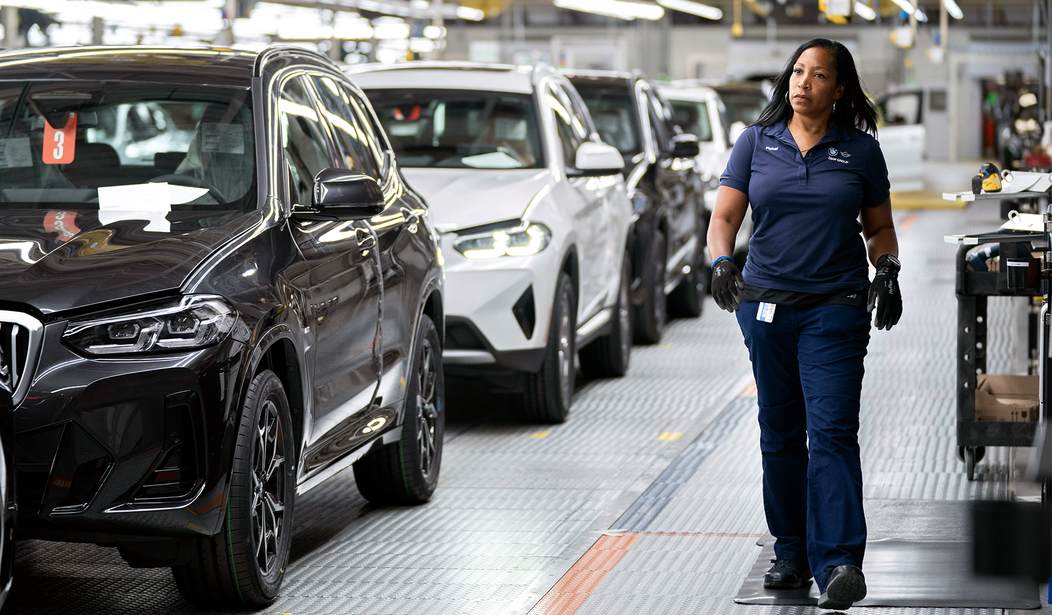Ford Motor Company has killed its highly touted SUV that CEO Jim Farley once touted as a “personalized bullet train.” Evidently, the bullet was aimed at Ford's head after a billion dollars in losses convinced the automaker to go in a different direction.
That direction is going to be expanding Ford's presence in the hybrid market. Ford's retrenchment is matched by other major car makers who vastly overestimated the market for anything electric.
Part of the problem is the bloated inventory of EVs. Americans say they want electric cars, but when faced with the choice, they prefer hybrids or fossil fuel vehicles. The questions about EVs from consumers keep piling up as buyers wonder about servicing their EVs and the lack of charging stations to keep them running.
“We’re quite convinced that the highest adoption rates for electric vehicles will be in the affordable segment on the lower size-end of the range,” Marin Gjaja, Ford’s chief operating officer for its Model e EV unit. told CNBC on Thursday. “We have to play there in order to compete with the entrants that are coming.”
Related: Ford's Latest Pivot Shows That the EV Craze Has Fizzled Out
China has stolen a march on Detroit and is expected to introduce several small EVs priced to sell.
“Any car company that’s not paying attention to them as a competitor is going to be lost when they hit their market,” said Sam Fiorani, a vice president at AutoForecast Solutions near Philadelphia. “BYD’s entry into the U.S. market isn’t an if. It’s a when.”
BYD stands for "Build Your Dream," and the "Seagull" is the EV that could change the entire ballgame for American auto manufacturing. Right now, there's a 100% tariff on Chinese EVs. But suppose a Democrat like Kamala Harris saw a way to achieve her carbon reduction goals by allowing the Chinese to take over the market.
The Alliance for American Manufacturing says in a paper that government-subsidized Chinese EVs “could end up being an extinction-level event for the U.S. auto sector.”
While surveys have shown that as many as half of U.S. consumers are open to buying an electric car, their relatively high prices and concerns over charger availability are dissuading many. EV sales in the U.S. and other regions are still growing, but the pace of the increase has decelerated sharply, despite many new models hitting the market.
Delaying some EV investments will conserve cash and buy automakers time to lower their battery costs and other EV-related expenses, analysts say. The moves also will hurt major parts suppliers, which have to adjust their businesses.
The cost of batteries is so high that most big automakers are losing money on their electric offerings. Ford’s EV business is on pace to lose about $5 billion this year. In the quarter ended June 30, it lost an average of about $44,000 per electric vehicle sold.
And that's with a government subsidy of $7,500 in tax credits for purchasing a new EV.
"Taken together, the walked-back plans are an acknowledgment that the big investments outlined at the start of the decade got ahead of the consumer’s appetite for a full switch to EVs," notes WSJ.
Car companies for years have made the case that they are ready to become technology companies, with plans to transform cars into battery-powered smartphones on wheels. Those ambitions, coupled with an unprecedented run of profitability fueled by stout pricing, lifted stocks.
Wall Street’s enthusiasm for that vision has faded, as U.S. electric-vehicle demand hasn’t taken off as expected. Now, with signs that pricing is losing steam as the American car buyer grapples with high interest rates, investors are looking for reasons to stick around.
EVs are not going away. But they're a long way from being profitable no matter how much money the government gives to people to buy time and pour into the market.
In five years, we'll be buying our EVs from China if the government is still determined to hit its carbon goal of a 50% reduction by 2035.










Join the conversation as a VIP Member